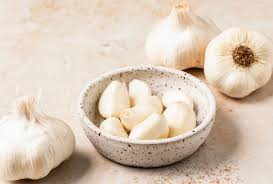A recent review published in Frontiers in Nutrition has highlighted the potential health benefits of raw white garlic consumption on cardiovascular health and chronic disease prevention. The study, which analyzed data from 22 previous studies, including 12 clinical trials and 10 observational investigations, sheds light on how this commonly used culinary herb may improve key health markers.
Key Findings: Improving Cardiometabolic Biomarkers
The review found that raw white garlic consumption could significantly enhance several cardiometabolic biomarkers, which are crucial for maintaining heart health. Some of the major improvements noted include reductions in total cholesterol, serum cholesterol, and triglyceride levels. It also raised high-density lipoprotein (HDL) cholesterol, often referred to as “good cholesterol.” Additionally, raw garlic helped improve anthropometric measures such as body mass index (BMI), waist-hip ratio, and fibrinolytic activity, an essential factor in blood clot breakdown.
Researchers also linked these improvements to a reduced risk of chronic diseases, including certain cancers, prehypertension, diabetes through better insulin homeostasis, and nonalcoholic fatty liver disease (NAFLD). These findings suggest that incorporating raw white garlic into a regular diet could provide protective health benefits beyond just enhancing flavor.
Mixed Evidence: A Call for Caution
However, the review also pointed out that not all studies demonstrated significant benefits. Three clinical trials included in the review did not find any substantial health advantages from raw garlic consumption, highlighting the need for cautious interpretation of the results. Additionally, most studies suffered from limitations such as small sample sizes, short follow-up periods, and a predominance of Chinese cohorts, raising concerns about the generalizability of the findings to broader populations.
Nine out of the 10 observational studies were conducted in China, and five relied on the same dataset, the Tianjin Chronic Low-grade Systemic Inflammation and Health (TCLSIH) cohort, further limiting the scope of the results.
Garlic: A Traditional Remedy with Modern Evidence
Garlic (Allium sativum), a close relative of onion, chives, and leek, has been used in traditional medicine for centuries. Rich in sulfur-containing compounds, garlic is known for its nutraceutical properties, which suggest health benefits when consumed regularly.
Previous meta-analyses have also shown that garlic can significantly reduce lipid levels without adverse effects, particularly when compared to red yeast and plant sterols. However, much of the research so far has focused on garlic extracts or aged black garlic, which undergo industrial processing that can alter their chemical composition and potentially limit their health benefits compared to fresh raw garlic.
“Various drying methods employed in industry to prepare different garlic products result in decreased levels of bioactive constituents such as allicin and total phenols compared to freshly harvested garlic,” the review explained. This underscores the importance of further research into the specific effects of raw garlic.
Study Limitations and Future Directions
While the study promotes raw white garlic as a beneficial dietary component, the authors emphasized the need for additional research. Most clinical trials included in the review had small cohort sizes, and the observational studies were largely confined to Chinese populations. Larger and more diverse studies are needed to confirm the health benefits and better understand the potential of raw garlic as a natural remedy.
The variability in dosage and study duration also complicates the ability to draw firm conclusions. However, one positive finding across the board was the lack of adverse effects associated with consuming raw garlic in amounts ranging from 4g to 35g per day.
Conclusion
Raw white garlic, a readily available and affordable ingredient, has shown promise in improving heart health and reducing the risk of chronic diseases like cancer, diabetes, and liver disease. Despite mixed results and study limitations, the review suggests that incorporating raw garlic into the diet may offer significant health benefits. Future studies with larger, more diverse populations are needed to validate these findings and explore the full potential of raw garlic as a natural dietary supplement.
Reference:
Fejes, R., Bondonno, C. P., Radavelli-Bagatini, S., Kühn, T., & Wagner, K.-H. (2024). Exploring the health benefits of raw white garlic consumption in humans: a mini review. Frontiers in Nutrition, 11. DOI: 10.3389/fnut.2024.1459627.












